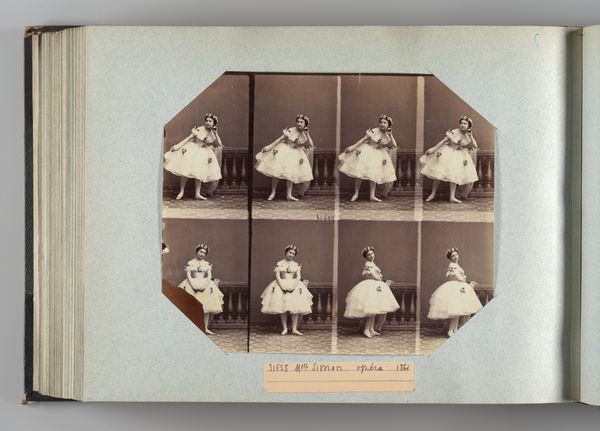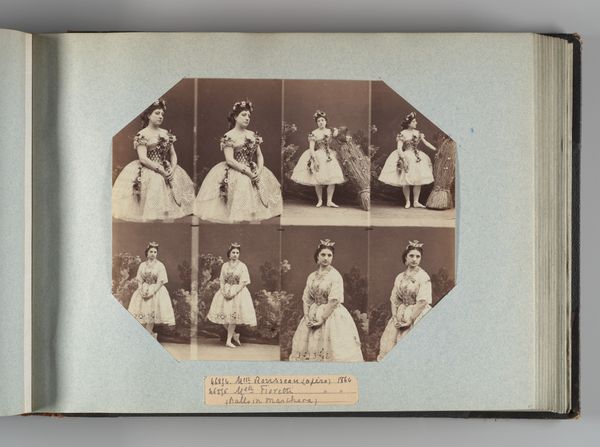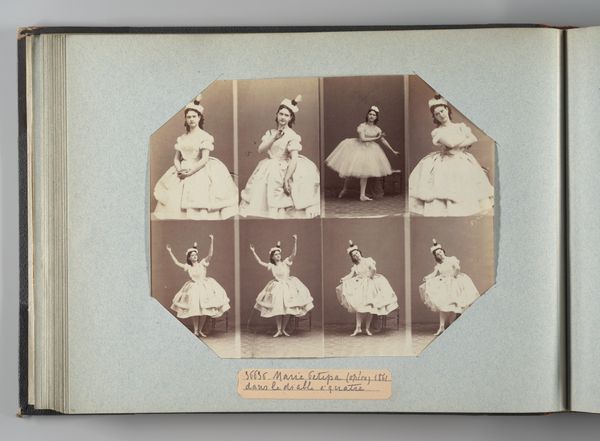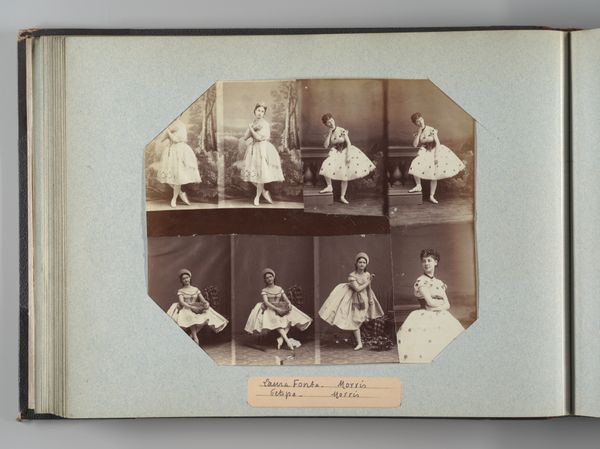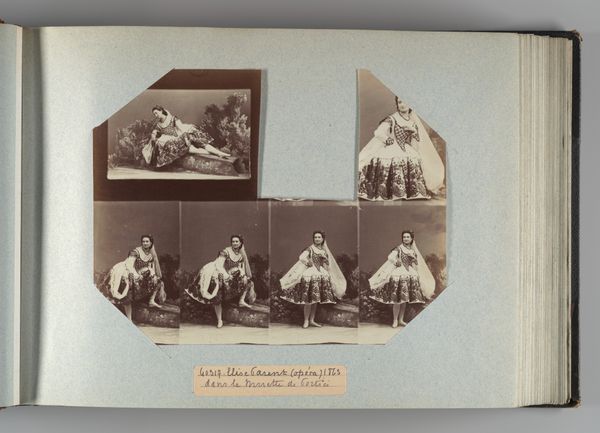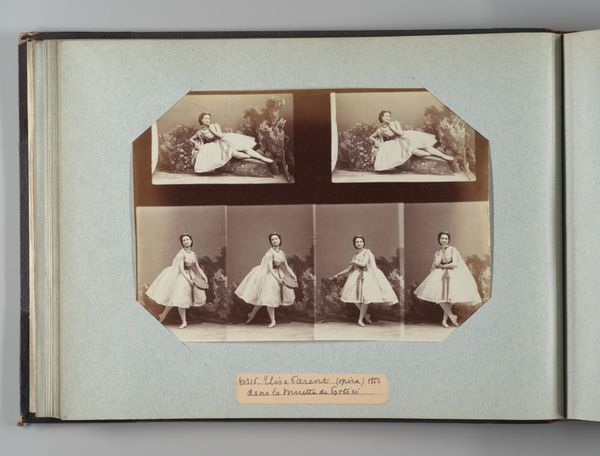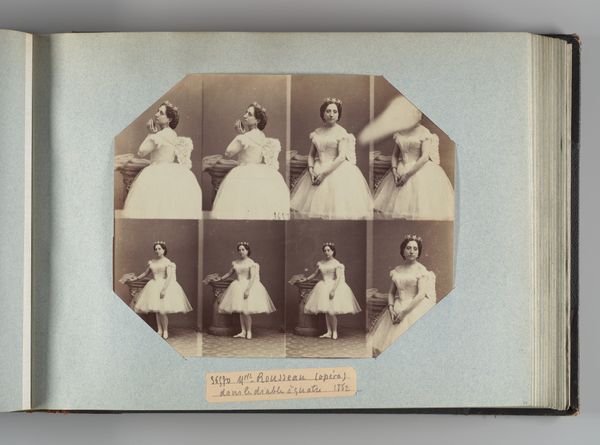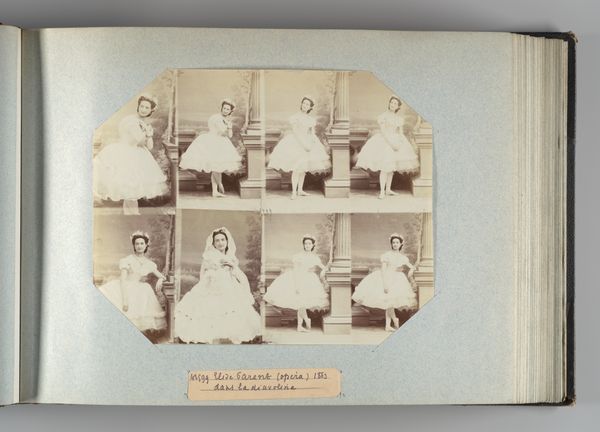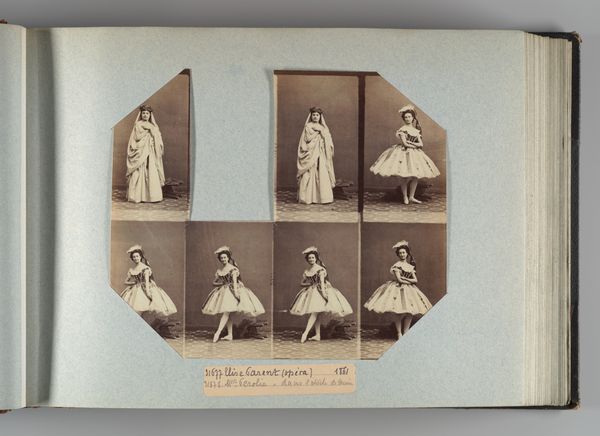
Dimensions: Image: 7 3/8 × 9 1/4 in. (18.8 × 23.5 cm) Album page: 10 3/8 × 13 3/4 in. (26.3 × 35 cm)
Copyright: Public Domain
Curator: The subject here is "Elisa Parent; Mlle Laurent," a work created by André-Adolphe-Eugène Disdéri between the 1850s and 1860s. This albumen print is currently held at the Metropolitan Museum of Art. Editor: What strikes me first is the multiple poses, like a dance sequence frozen in time, and that pale sepia tone that speaks so directly to a specific moment in photographic history. It feels incredibly staged. Curator: It’s an incredible demonstration of Disdéri's carte-de-visite process. Each pose creates a complete impression, yet they gather into a single story. Do you feel a connection with this particular era? Editor: Yes, especially how Romanticism filtered through genre painting. You can see it in the artificial backdrop, and even the slightly stiff postures attempting grace. This aesthetic almost becomes a coded language expressing societal expectations of women and the commodification of artistic performance. Curator: The deliberate use of costume contributes so much to this impression. White, of course, stands for purity. These visual elements evoke deeper meanings. One also could observe how ballet steps were codified as virtues through performance in the 19th Century. Editor: True, and by packaging her image in this way, Disdéri wasn't just offering portraits, but aspirations. Each image, with its conventional romantic tropes, contributes to an elevated image of women that feels simultaneously enchanting and restricting. How do we begin to disentangle performance from truth in that era, particularly as photographic technology advanced? Curator: Exactly, photography granted both authority and theatrical possibilities for self-construction, opening pathways that still echo today. Disdéri helped to define what the “artist” should look like, to popular culture. Editor: This photograph freezes her not just in an era but in the constant push and pull between performance and personhood, illusion and aspiration, and it makes one appreciate that there may always be inherent ambiguity in images. Curator: For me, revisiting such imagery also reveals that even seemingly outdated representations hold keys to understanding the endurance of certain dreams and myths within cultures. The visual symbols, with roots in both cultural trends and human emotions, resonate still.
Comments
No comments
Be the first to comment and join the conversation on the ultimate creative platform.

